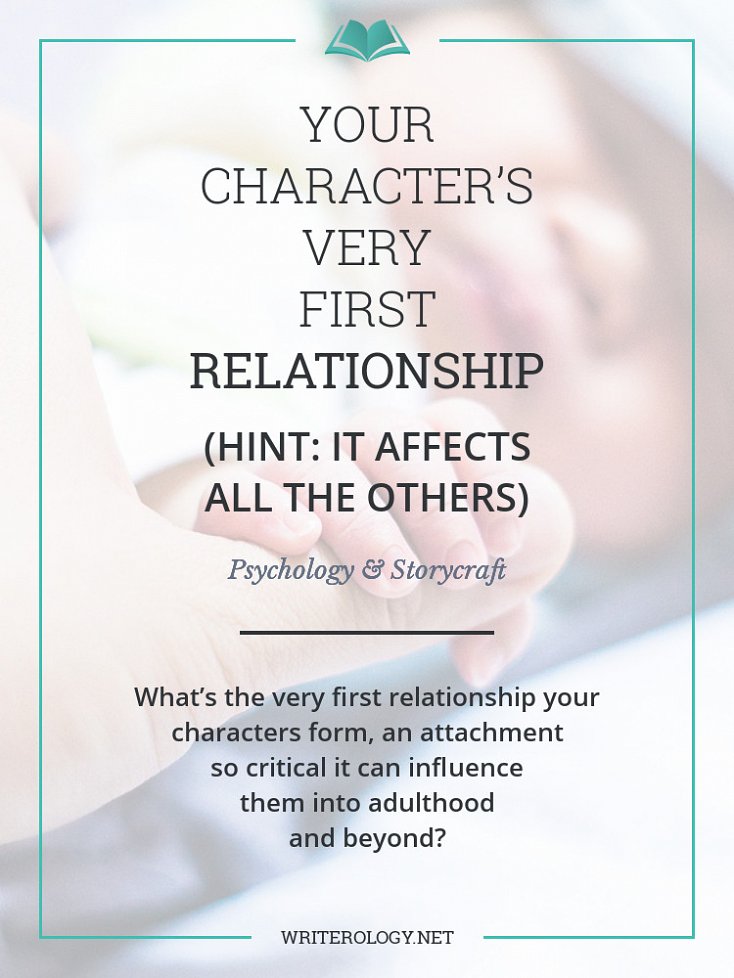Your Character’s Very First Relationship (Hint: It Affects All the Others)
What’s the very first relationship your characters form, an attachment so critical it can influence them into adulthood and beyond? It’s made long before they can even remember.
People—and characters—are made up of their past experiences. When crafting characters, one of the most important aspects you consider is their past. Where did they come from? What was their upbringing like? How does that affect them in the present?
We delve into our characters’ childhood memories all the time, but rarely do we go further back than their fourth or fifth birthdays. On the face of it, it makes sense—they’ll remember very little before then, so why consider its impact on their personalities?
But there is an important factor you might be forgetting, one that can influence a character right up into their twilight years, and it happens long before clear memories begin to form.
What am I talking about? Their first ever relationship.

Around nine months of age, the typical child will form a strong emotional attachment with the person who cares for them most—their “primary caregiver”. That could be their mother or father, or it could be another caregiver, such as a relative or guardian.
The quality of relationship this primary caregiver has with the child can lead to one of four types of attachment styles. It’s these attachment styles—the very first relationships the child forms—that create a template for their future relationships. When you look at it like that, considering the type of attachment your character had to their primary caregiver can be very useful indeed (but more on that later!).
So what are these different attachment styles? According to the psychologist Mary Ainsworth, they are:
Secure Attachment
This is the most common form of attachment style in developed countries, with around 50-67% of infant-caregiver relationships being secure. If the primary caregiver is warm, attentive and sensitive to the baby’s needs, then a secure attachment between the two should follow. The child will be upset when the caregiver is separated from them—for example, when they to go to work—and will welcome them when they return.
Insecure-Avoidant Attachment
In around 15% of cases, infants have an insecure-avoidant attachment to their primary caregiver. This results from a cold or distant primary caregiver, with the child displaying indifference to them when they enter or leave a room.
Insecure-Resistant Attachment
This attachment style covers about 10% of relationships between babies and their primary caregivers, and stems from an inconsistent display of comfort. The caregiver will swing between warmth and aloofness, which is mirrored in the child’s behaviour—the baby is distressed if the caregiver leaves and tends to switch between clinginess and rejection of the caregiver when they return.
Disorganised-Disoriented Attachment
This type of attachment style is seen in approximately 15% of child-caregiver relationships and forms when primary caregivers are abusive, neglect their child, or have been separated from them for a long time. In other words, the child looks to the caregiver for reassurance, but is frightened of them. This leads to some contradictory behaviour: the baby might seek comfort from the caregiver, yet feel anxious in doing so.
How Does Attachment Style Affect Later Life?
Secure Attachment
- Children with a secure attachment tend to have more positive relationships with others as teenagers and adults. Their template for close relationships says they should be warm and comforting, with trust and love being major factors. Securely attached children also tend to be more popular.
- Having a secure attachment can lead to higher self-esteem. As a result, it becomes easier to relate to others, which might be where all that popularity comes from.
Insecure and Disorganised Attachment
- People with insecure-avoidant attachments tend to be more independent in their relationships and will often feel confined or smothered if a partner tries to be close.
- Insecure-resistant attachment styles can lead to clinginess in a relationship, with the insecurely attached partner wanting more closeness than the other partner may be willing to give.
- In disorganised-disoriented attachments, a mistreated or neglected child can be abusive in her other relationships, creating a cycle of abuse.
- People with insecure or disorganised attachments show lower levels of self-esteem and tend to be unpopular with peers.
- It’s not all doom and gloom, though. Insecure attachments aren’t necessarily permanent things; changes in parenting or having a relationship with a well-adjusted person later in life can turn an insecure attachment into a secure one.
Applying Theory to Fiction
Back-story
Does your character avoid closeness with others and feel smothered, perhaps irrationally, when someone tries to get to know them? Then they might have had an insecure-avoidant attachment with their primary caregiver. Knowing the type of person your character is in the present and the relationships they have can help you to develop an appropriate back-story for them, including the state of their relationship with their primary caregiver.
Working from the opposite direction, if you already know that your character, for example, suffered abuse in their early years, then you can model their later relationships on this.
Relationships
Once you’re aware of the type of attachment your character had, this can give you a basis for the tone of their adolescent/adult relationships—very handy if you aren’t sure where to go with them.
Conflict
Knowing your character’s attachment style is particularly useful in creating conflict. For example, if your character had an insecure or disorganised attachment as a baby, this could create several obstacles for them to overcome throughout the story, such as learning to trust, becoming close to someone, becoming more independent, or dealing with an abusive past.